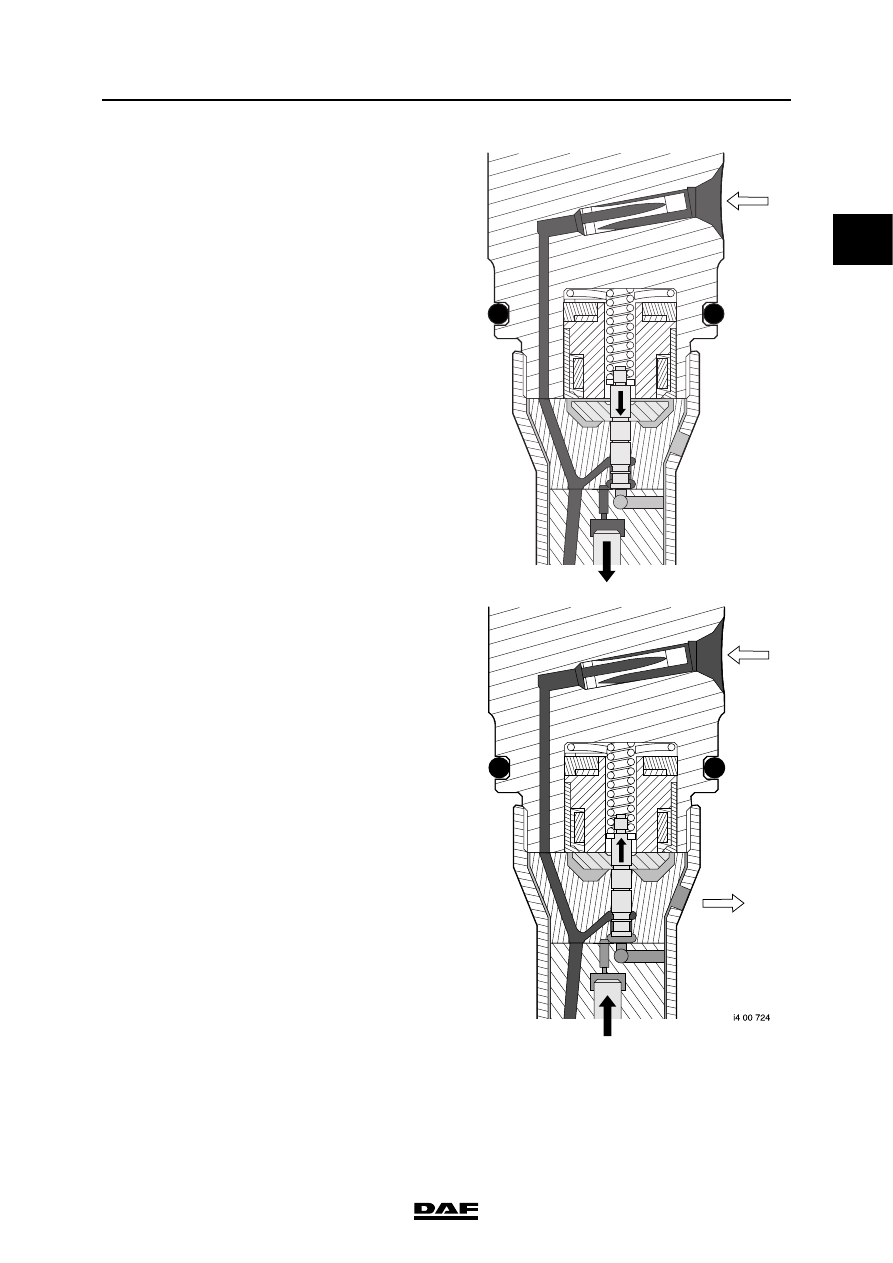DAF XF105. Manual - part 94

1
©
200528
2-25
Description of components
DMCI ENGINE MANAGEMENT SYSTEM
XF105 series
Even though fuel is now being supplied to the
injector, this does not mean that it immediately
starts injecting. The same fuel pressure that must
lift the injector needle also pushes down the
plunger - along with the plunger spring. The
injector needle cannot yet be lifted.
When the coil is activated by the electronic unit,
the valve is pulled in against the pressure of the
spring and the opening to the return is released.
As a result, the pressure above the plunger
decreases. The fuel pressure under the injector
needle now overcomes the pressure of the spring
above the plunger. The injector needle is lifted
and fuel is injected.
To stop injection, the fuel supply pressure to the
injector is decreased by deactivating the pump
unit. The injector is only deactivated once the fuel
pressure is low enough. This is to allow the
plunger spring to close the injector needle
quickly.
i4 00 723